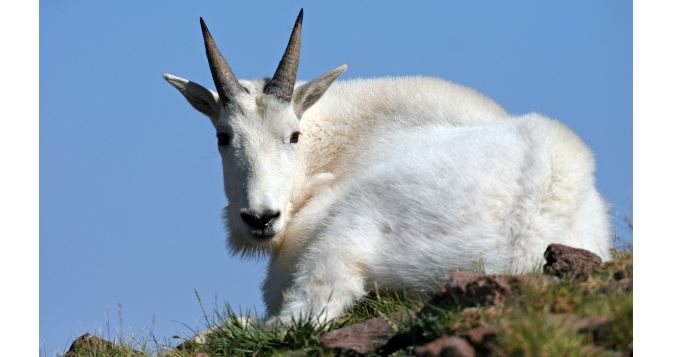SALT LAKE CITY, Utah, Aug. 30, 2023 (Gephardt Daily) — Travelers heading to Utah’s mountains over the holiday weekend need to remember safety tips regarding mountain goats, which have made headlines recently for goring and killing several dogs.
Utah is home to roughly 1,500 mountain goats located across the state, according to the state’s Division of Wildlife Resources.
Mountain goats are found in high-elevation mountain areas with rugged, rocky alpine terrain. The largest herds are located in the Uinta Mountains, the Tushar Mountains near Beaver and a few herds scattered throughout the Wasatch Mountain Range, including on Mount Timpanogos and in Little Cottonwood Canyon.
Mountain goats primarily eat grasses and flowering plants and will also eat shrubs and mossy lichen. They don’t migrate long distances like other big game animals do, but they will sometimes move to slightly lower elevations in the mountains during extreme winter conditions. They are fairly active throughout the day, except for in the middle of the day when it is really hot in the summer.
“Mountain goats are really adapted to snowy weather and high-elevation conditions,” said Rusty Robinson, species coordinator. “As part of that adaptation, mountain goats don’t have hard hooves like other big game animals. Their hooves are more rubbery, which helps them grip the rocks when they are climbing a steep cliffside. They also grow really long, thick hair in the winter, and then shed it in the spring when the weather warms up.”
Mountain goats are one of the few local big game species where both the males and females grow horns, so it’s hard to tell them apart. However, the female goats (nannies) have a thinner horn at the base and typically have a bigger gap between their horns. The male goats (billies) are also typically larger in size.
The male mountain goats typically get more aggressive during their breeding season (known as the rut), which typically takes place in November. The nanny goats get more aggressive when they have baby goats (known as kids). They typically give birth in late May and then the nannies and kids join up and form large nursery herds. During the summer months, they will mostly graze in meadow areas with abundant feed while they are nursing their kids. The nannies are often territorial during this period when they have their kids with them.
Many of the mountain areas where mountain goats are found aren’t accessible — due to deep snow — until mid-to-late summer. Hikers will most frequently encounter nanny and kid mountain goats in the lower-elevation meadow areas since those are easier to access than other, steeper mountain goat terrain.
Safety tips
If you encounter a mountain goat while hiking or backpacking, here are some tips to help keep you safe:
- Give them plenty of space (roughly 150 feet or more). Mountain goats will often stand their ground or charge you if you get too close.
- If you see a mountain goat coming down the trail you are on, turn around and head back down the trail to avoid getting too close to them.
- Like other big game animals, mountain goats can be especially aggressive toward dogs. Keep dogs leashed and under control at all times. It is against Utah law to allow dogs to chase or harass protected hoofed wildlife, like mountain goats.
- If a mountain goat begins approaching you, slowly back away and give it some distance. If it continues approaching, wave your arms and make loud noises to try and scare it away.
- Talk to the land-managing agency for the area where you’re hiking and look for signs at trailheads to know if a particular trail has had reports of aggressive mountain goats. Then stay alert.
- Never feed a mountain goat or allow it to lick your skin.
“Mountain goats can impale you with their horns, so you don’t want to risk coming into contact with one,” Robinson said. “Remember that they are wild animals, so always give them plenty of space. They are found in some pretty extreme terrain, so you don’t want to risk getting too close to one while on the edge of a cliff.
“Be aware of your surroundings, stay alert and don’t put yourself in those situations. If you need to turn around and cut your hike short, do it.”







